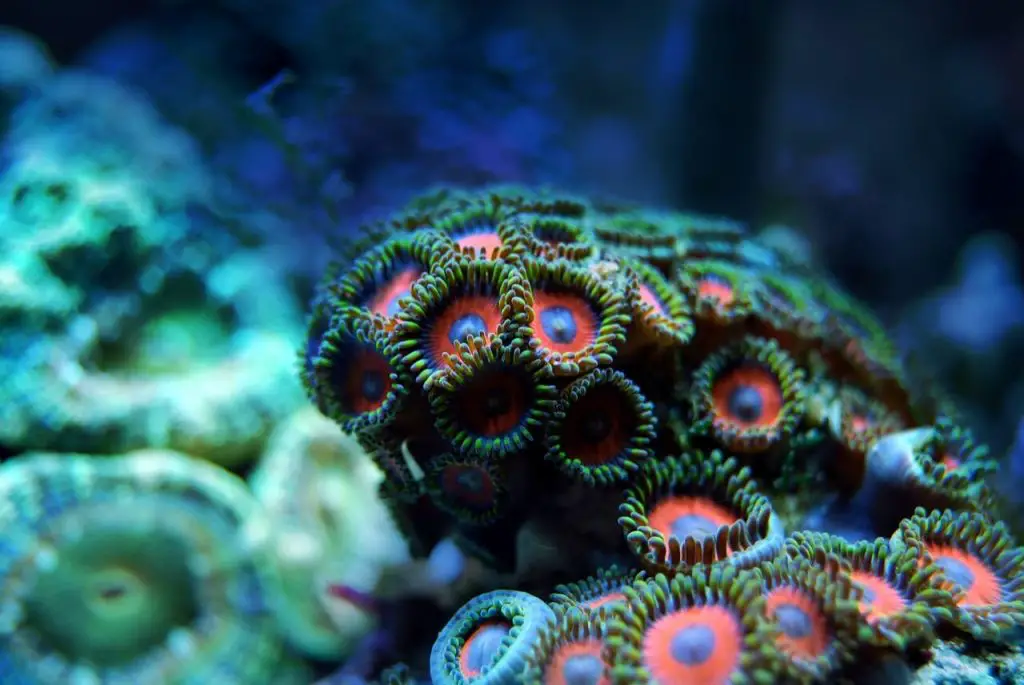This post may contain affiliate links. As an amazon associate I earn from qualifying purchase. Learn more
Learn how to safely raise the salinity in a reef tank, how fast you can do it, and how low salinity affects the marine organisms in your tank.
Keeping stable parameters in a reef tank is one of the main struggles new saltwater aquarium hobbyists have.
It’s also one of the main reasons many quit after a year. Unlike freshwater tanks, saltwater aquariums take a lot of work.
Even if you have all the equipment in the world, it all comes to the maintenance you, as a hobbyist, do regularly.
However, despite our regular maintenance, various unexpected factors can lower the salinity in our reef tanks. This article will show you what I do to safely raise the salinity in my saltwater aquarium and what mistakes to avoid.
Let’s get started!

Contents
How Do I Increase Salinity in my Reef Tank?
Before you do anything, check the salinity with a reliable refractometer that is appropriately calibrated.
New reefers usually want to save as much as possible at the beginning. A mistake I’ve made, as well. They typically buy a hydrometer which is an unreliable tool, and end up with wrong measurements.
After you’ve done the measurement and you are sure the salinity level is lower than the requirement, you can proceed to the next step.
Calculate how much salt you need to achieve the required level and start pouring salt in RODI water. When the salt is fully dissolved, top off your tank with the saltwater until it reaches the desired level. When the water evaporates, top off the tank only with freshwater.
How Fast Can You Raise Salinity in a Reef Tank?
Nothing good comes when you rush things, especially in the saltwater aquarium hobby where patience is everything.
Check the salinity with a refractometer and then gradually top off with premixed saltwater. Monitor the salinity and stop when the desired level is accomplished.
Can I Add Salt Directly to my Reef Tank?
One of the most common mistakes beginners make is adding salt directly to the tank. It is a big mistake that leads to risking the life of the inhabitants in your reef tank.
When you start your saltwater aquarium, adding salt directly in the tank is fine, but adding salt in a populated tank is a big no-no.
Make sure that the salt is fully dissolved in RODI water before you add it to your aquarium.
What Happens to Fish if Salinity is too Low?
Unlike corals, marine fish can live in lower salinity without impact on their overall health. In fact, many stores keep their fish-only tanks at between 1.017 to 1.023 specific gravity.
In addition, lower salinity levels are helpful for marine fish because parasites and other kinds of pests can’t live in lower salt concentrations.
Lower salinity is also used in quarantine tanks to treat marine fish with ich. The salinity is dropped to 1.010 specific gravity, which is not recommended to be at those levels for a prolonged period. A maximum two-week period is recommended to eradicate the infection.
What Happens to Corals if Salinity is too Low?
Corals are more sensitive animals than fish, and sudden changes in the parameters could have adverse effects on their health or, even worse, cause a death.
Corals thrive at 1.026 (35 ppt) specific gravity, which is the natural salinity in the oceans. Small fluctuations in your tank won’t hurt your corals, but they might have a long-term impact on their overall health.
But how low could you go? There aren’t many scientific studies on this subject, but based on reefers’ experience, anything lower than 1.020 specific gravity will probably bleach your corals. They won’t be happy around 1.020 too, but they’ll probably survive.
However, always keep your salinity levels at 1.026 specific gravity and be careful; after all, corals are delicate creatures.
If you are interested to learn more on this topic, feel free to check the other related articles.